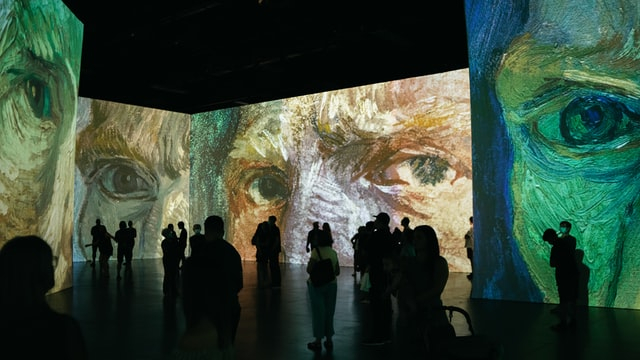The Toxic Tortured Artist Trope

The tortured artist is a cliché most of us are familiar with. The writer hunched over a desk with wine and cigarette butts littering the room, furiously typing to sooth their manic state. The painter who suffers from schizophrenia and suicidal tendencies, but through the pain produces breathtakingly authentic work. The musician with depressive tendencies and a severe drug problem who pours melancholy into his lyrics.
Edvard Munch, the mastermind behind the notorious Scream, suffered from severe anxiety and hallucinations. Constantly concerned that if he lost his mental illness, he would lose his talent as well, he has been quoted as saying, "My fear of life is necessary to me, as is my mental illness." Charles Bukowski's piercing ability to express internal conflict in his writing is one of the reasons he remains so relatable and popular.
Artistic modes have historically existed as a means of escapism and working through painful experiences, but it seems that we as a society equate a need to suffer with creativity. The more eccentric an artist, the more authentic society views them to be. The creative genius is in a constant state of torment. The self-destructive, depressed aesthetic has existed forever, and as a society, we have a tendency to admire the mentally tortured and broken in the name of art.
Kurt Cobain's tragic death has been glorified over and over again, most recently by Lana Del Ray, modern perpetuator of the dark and depressed aesthetic. When asked about her idols in a recent interview, she named a few members of the notorious "27 Club", including Amy Winehouse and Cobain. When the interviewer pointed out that what links her idols is tragic deaths at a young age, she responded that she considered an early demise as glamorous. The culture of mental illness in creative outlets, of expressing struggles through artistic means, has started to permeate the mainstream.
The popular show, American Horror Story, depicts suffering from mental illness in a way that convinces its potentially young audience members that there is a beauty in being damaged and toxic. The Weeknd, while not necessarily perpetuating the problem himself, creates lyrics surrounding women, depression, and heavy drug use has accumulated a following seemingly hell-bent on reproducing his dark and twisted attitude in themselves. Glamorizing the narrative of the melodramatic, drug-addicted creative type is dangerous and there exists a very fine line between appropriating and romanticizing mental illness in creativity, and using an art form as a creative outlet to express and promote real truth and emotion.
It seems that for all of the issues with media glorifying mental illness today, this generation is more comfortable expressing themselves and their struggles, and consequently the drive to erase the stigma surrounding it is a noble mission. Billie Eilish and many other artists are celebrated for "getting real" about mental health, for creating an outlet the world needed to express the internal struggles many face today. She is honest and open with her following and the rest of the world about her battles with depression and body dismorphic disorder, topics that until recently have been glazed over as taboo, and she frequently encourages her fans to seek treatment if they are struggling with mental illness.
The media today are steadily becoming more open and realistic in its portrayal of mental illness, but even so, the need for more awareness cannot continue to bleed into a culture of romanticizing and trivializing the problem. As a society, we must be better about opening the dialogue in an honest way —not creating shows, movies, and music which, instead of shedding light on the problem, create a poetically tragic and distorted picture of beauty in pain.







